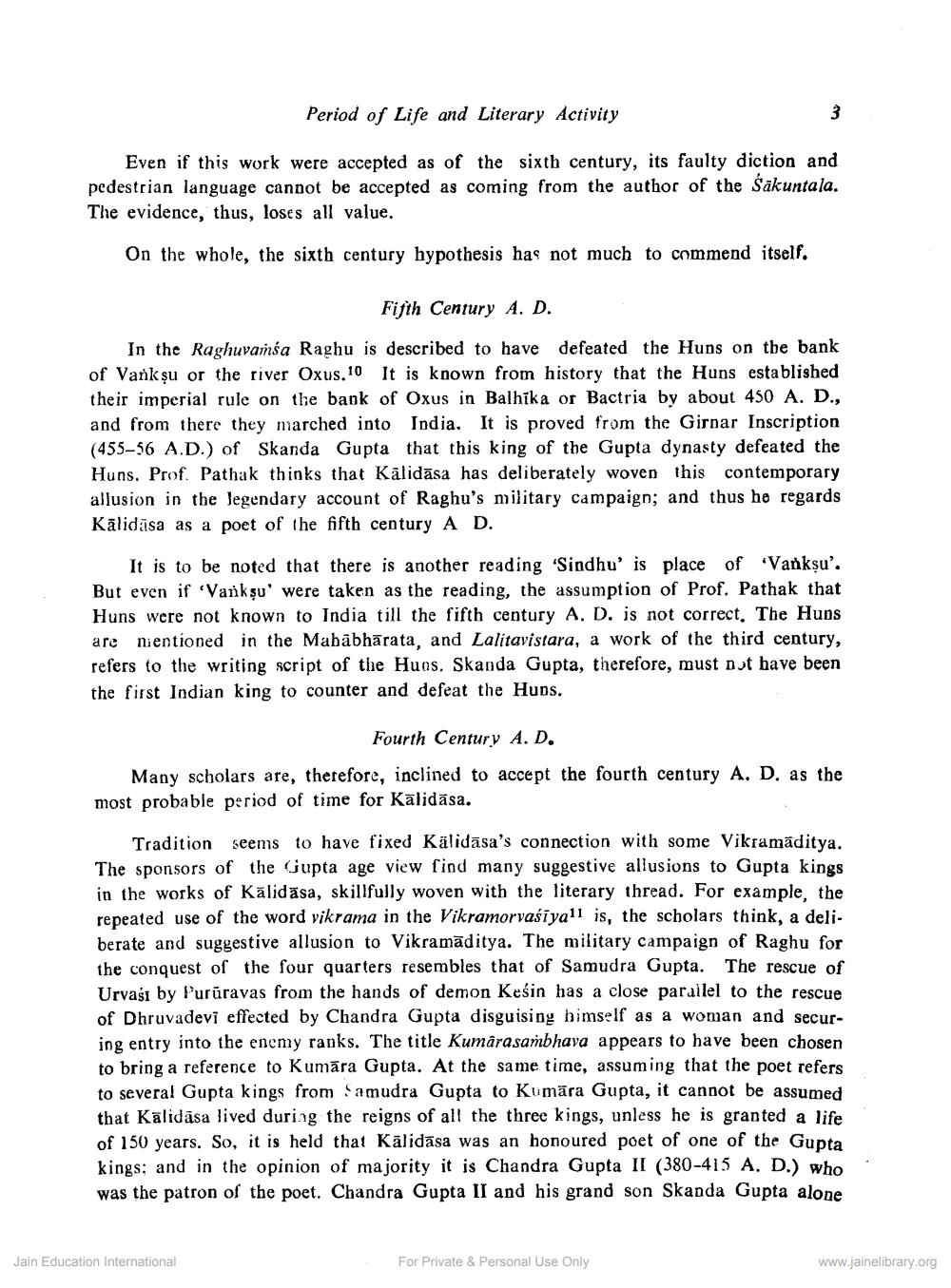________________
Period of Life and Literary Activity
Even if this work were accepted as of the sixth century, its faulty diction and pedestrian language cannot be accepted as coming from the author of the Sakuntala. The evidence, thus, loses all value.
On the whole, the sixth century hypothesis has not much to commend itself.
Fifth Century A. D.
In the Raghuvamsa Raghu is described to have defeated the Huns on the bank of Vankşu or the river Oxus. 10 It is known from history that the Huns established their imperial rule on the bank of Oxus in Balhika or Bactria by about 450 A. D., and from there they marched into India. It is proved from the Girnar Inscription (455-56 A.D.) of Skanda Gupta that this king of the Gupta dynasty defeated the Huns. Prof. Pathak thinks that Kalidasa has deliberately woven this contemporary allusion in the legendary account of Raghu's military campaign; and thus he regards Kālidāsa as a poet of the fifth century A D .
It is to be noted that there is another reading 'Sindhu' is place of Vankşu'. But even if "Vankşu' were taken as the reading, the assumption of Prof. Pathak that Huns were not known to India till the fifth century A. D. is not correct. The Huns are mentioned in the Mabābhārata, and Lalitavistara, a work of the third century, refers to the writing script of the Huos. Skanda Gupta, therefore, must not have been the first Indian king to counter and defeat the Huns.
Fourth Century A. D. Many scholars are, therefore, inclined to accept the fourth century A. D. as the most probable period of time for Kalidasa.
Tradition seems to have fixed Kalidasa's connection with some Vikramaditya. The sponsors of the Gupta age view find many suggestive allusions to Gupta kings in the works of Kālidāsa, skillfully woven with the literary thread. For example, the repeated use of the word vikrama in the Vikramorvasiyall is, the scholars think, a deliberate and suggestive allusion to Vikramāditya. The military campaign of Raghu for the conquest of the four quarters resembles that of Samudra Gupta. The rescue of Urvasi by Purūravas from the hands of demon Kesin has a close parallel to the rescue of Dhruvadevi effected by Chandra Gupta disguising himself as a woman and securing entry into the enemy ranks. The title Kumarasambhava appears to have been chosen to bring a reference to Kumāra Gupta. At the same time, assuming that the poet refers to several Gupta kings from Samudra Gupta to Kumāra Gupta, it cannot be assumed that Kalidasa lived during the reigns of all the three kings, unless he is granted a life of 150 years. So, it is held that Kālidāsa was an honoured poet of one of the Gupta kings: and in the opinion of majority it is Chandra Gupta II (380-415 A. D.) who was the patron of the poet. Chandra Gupta II and his grand son Skanda Gupta alone
Jain Education International
For Private & Personal Use Only
www.jainelibrary.org




